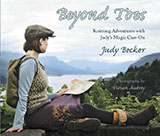I thinks it’s safe to say that my feet will not go cold in the winter. My sock drawer holds quite a few pairs of hand-knit socks. But I have my favorites. And I tend to wear my favorites more than the less-favored (but still nice) pairs. And because I tend to wear them a lot, I tend to wear them out. I am rather fond of blowing out the bottoms of the heels. It may be because my feet are narrow, and my heels even more so, and my shoes tend to be a little loose. Whatever the cause, I usually fail to notice that a pair is inching towards disaster until one morning, bleary eyed and caffeine-less, I pull on a pair of socks and realize that something just doesn’t feel quite right and my heel is a bit drafty…
I am then faced with a choice: to darn or to toss? So far, since it’s always been my favorite pairs, darning has won out. Since I have a pair that needs darning, I thought I would share the process with you, gentle reader, in case you also might want to darn a sock or some other knit object.
These are the tools of the trade:
- Thread for guy-wires. Any color can be used but a contrasting color is easier to see. It will be removed after darning.
- Yarn for mending. I had some yarn left-over from these socks and amazingly enough actually found it. I can use it for mending. If I couldn’t find it, I would try first to match the same yarn in a different colorway. Failing that, I would look for yarn of the same weight and ideally the same fiber content. Color is the least important factor because the patch will be on the bottom of my foot.
- Two needles: a sewing needle (for the thread) and a darning needle (for the yarn).
- A darning egg or some other roundish object to provide a solid surface on which to work.
First, put the darning egg inside the sock and position the hole over it.
Examine the hole in the sock. Are stitches missing? Or has the fabric become thin and perhaps torn, but everything is still there? If all of the fabric is there, you can skip this step. But my socks have an actual hole with several missing rows of knitting. Before I can repair the hole, I must first create a structure to hold the yarn while I repair.
Thread a length of the thread onto the sewing needle. Starting on a row where all of the stitches are present, run the thread through the tops of the stitches of that row.
Turn and run the thread through the tops of the stitches of the next row. If stitches are missing, continue across the blank space with the thread and through the stitches on the other side of the hole.
Work back and forth with the thread until you have once again reached solid fabric. Secure the thread on both ends so it won’t pull loose while you are working.
Now thread a length of yarn onto the tapestry needle. Starting at the bottom of the hole – far enough down so that you are working in solidly knit fabric – begin duplicate stitching the first row.
When you reach the end of the first row, turn and begin duplicate stitching the next row above it. As you duplicate stitch this row, be sure to work through the stitches you just created in the previous row.
Continue working up the fabric, duplicate stitching through the stitches that are there.
When you come to the point where there are no stitches – only thread – loop the top of your new stitch around the thread. The thread will keep the yarn loop that forms the stitch from accidentally dropping.
On the next row you will duplicate stitch through the loops that are held by thread in the same way as you duplicate stitched through the stitches held by other stitches.
In this picture, the brown stitches on the previous row were created by looping them around the thread. Now I am creating red stitches by stitching through the brown stitches on the bottom, and looping the red yarn around the thread on the top.
Continue duplicate stitching up the rows of the sock until you are stitching through the solidly knit fabric at the top of the hole.
Once the patch is finished, weave in your ends and remove the thread.
Here is the finished patch on the bottom of my sock heel.
Although the other sock is wearing thing, it doesn’t yet have a hole in it. Since I’m darning one, however, I may as well go ahead and darn them both. The second sock will be easier because only the duplicate stitching is necessary. There is no actual hole, so the thread guy-wires aren’t required.
Darn those socks!




































